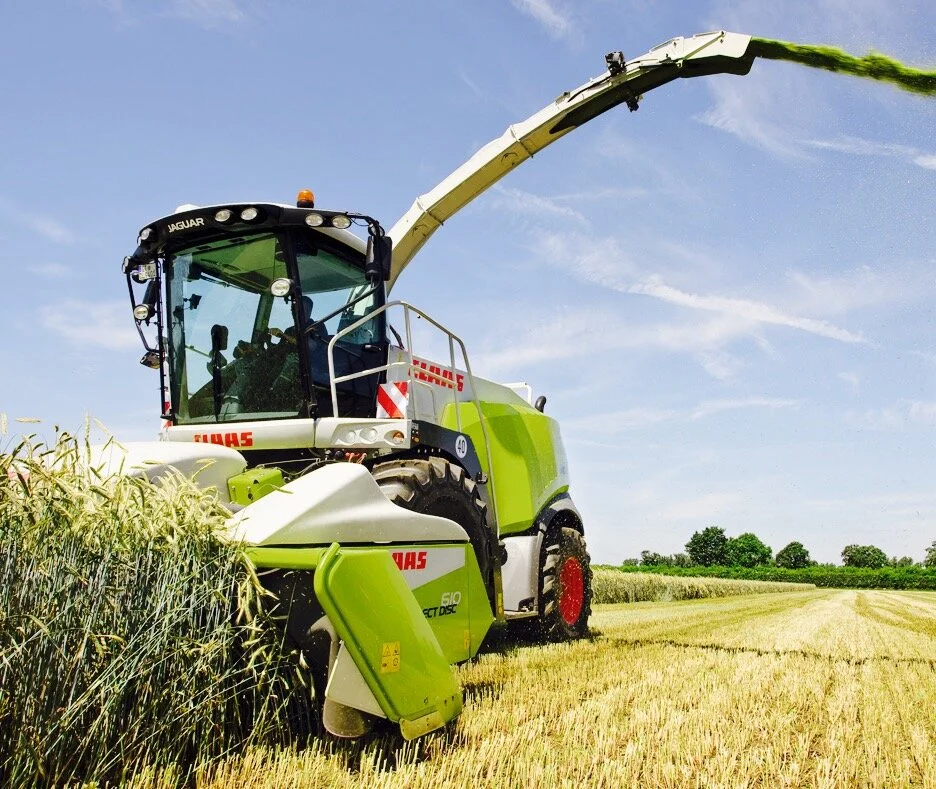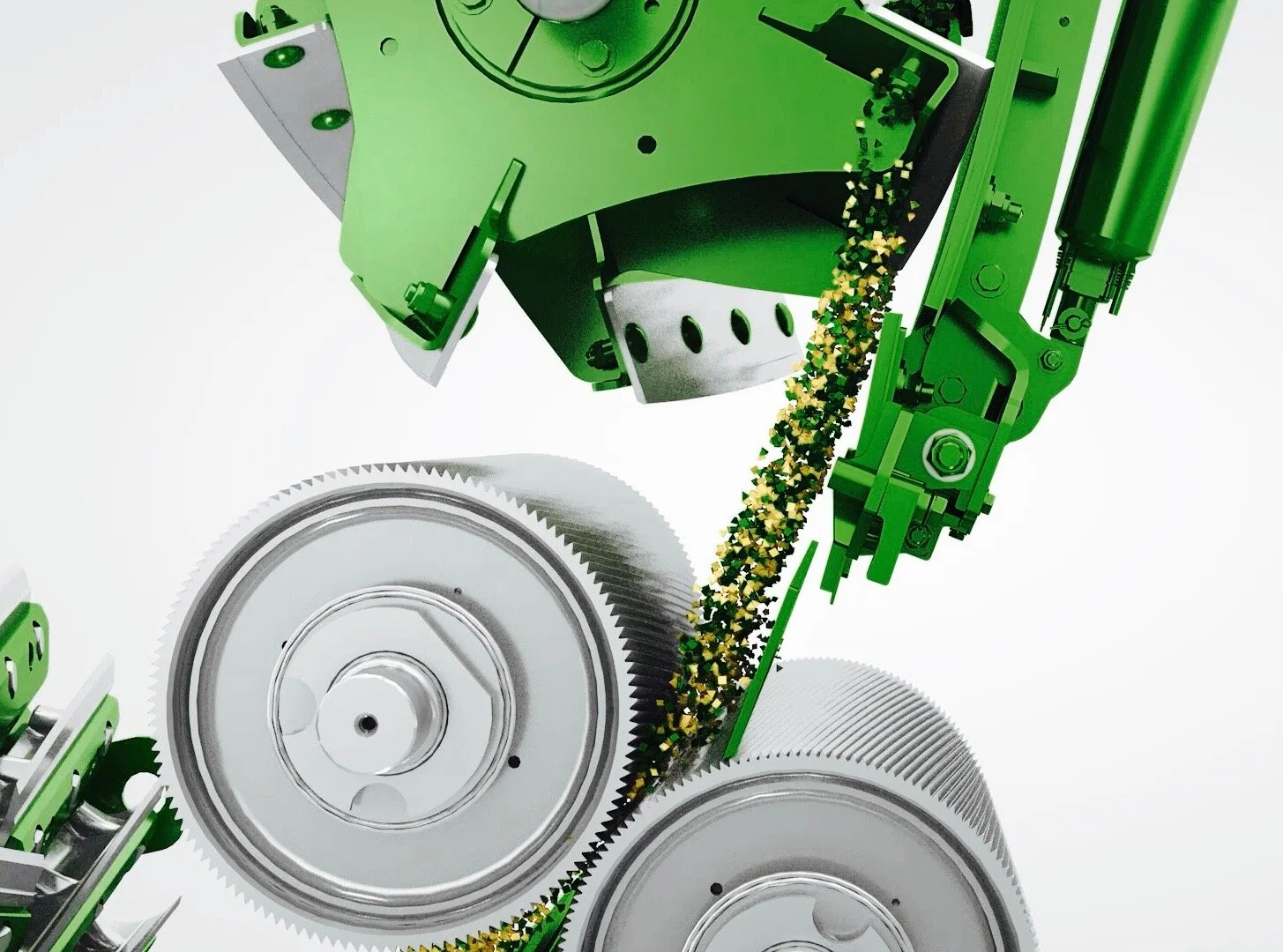Cutting whole crop silage
Fashions come and go but as the old adage goes, there is nothing new under the sun and whole crop silage falls into both of these clichés. It’s nothing new, it’s all been done before but it’s back in fashion and today more and more farmers and growers are looking again at whole crop silage as part of the forage jigsaw. Growing it is one thing, but what do you need to turn that whole crop into great silage? The simple answer is a contractor with the right bits of kit who turns up on time.
What you need to harvest whole crop silage
So what is the right bit of kit to harvest whole crop silage? Well there are options to consider and choosing the right one for your crop depends on your crop. Early whole crops were harvested using self propelled forage harvesters fitted with adapted combine headers, reciprocating knives, reels and all. Although some still use this system, most whole crops are now cut with high speed discs, either incorporated into specialist wholecrop headers or as tractor mounted mowers. The best solution really depends on the growth stage of the crop, and its dry matter at harvest.
Adapted combine headers for whole crop
Whilst a combine header always managed to do a job, there are issues with the crop flow. Combine headers are designed to harvest a dry crop and anyone who has tried to combine cereals in less than ideal conditions will have experienced the problems. Crop flow around the header is difficult and often leads to wrapping around the cross auger. However there are still times when this option will be the one to use. Combine headers are designed to harvest all of the fully ripe grain with minimal losses so if you’re cutting very late wholecrop then losses can be excessive using high speed discs. A combine header can safely harvest these delicate crops but forward speeds are restricted by the knives ability to cut the crop, so operators and engineers have looked elsewhere….
Specialist wholecrop headers
Fitting a disc mower bed to the front of a forage harvester seems a logical step and it was probably first attempted by a farmer who was handy with a welder. Today there are numerous manufacturers that offer whole crop headers with adapters to suit your forager, whilst Claas and Krone (unsurprisingly) offer their own headers incorporating adapted mower beds from their particular grass harvesting line-ups. Most of these machines work in a similar manner with a disc mower bed cutting the crop and presenting it to a high speed cross auger. This type of machine can harvest crops with widely ranging dry matter and crop maturities, from leafy grass to high maturity cereals.
Whole crop header downsides?
Disc cut whole crop headers are simple and reliable, so what are downsides? This type of header usually needs to be removed from the chopper for transport – just like a combine – so daily output is restricted if you are regularly moving fields. The units are heavy too so put a huge load on the front axle of the harvester resulting in soil compaction as well as wear and tear. And then there are the costs, these headers are not cheap, with list prices from £40,000 to just shy of £100,000! If you are cutting huge areas of whole crop silage for AD plants then this type of investment might be a no brainer, but for many it’s hard to make the maths work. It’s unlikely you can use a direct cut header to cut much grass silage - in the UK at least – as there is no chance for the crop to wilt.
So what else can you use to cut whole crop? There are contractors who using an existing maize header - in particular the small drum 300 series Kemper headers - to harvest wholecrop, and for mature crops that might well be a good solution. For others it’s tempting to try and use the mowers sitting idle in the yard.
Using a mower to cut whole crop silage
Can you really use the mower? Yes you can, as long as the crop is at the right growth stage. Go too late with a mower and there will be massive losses as the grains are shaken out of the ears. Get the growth stage and the dry matter right and this can be a very efficient use of the kit to harvest wholecrop. Ideally you want to use a “straight” disc mower as conditioning is only going to increase losses. Krone seems to have this market in mind with its EasyCut B 950 Collect as do Pottinger with the A10 Cross Flow mower. Both combine a straight disc mower with crop merging augers.
Growth Stages and Dry Matters
To put some figures to these guidelines, mowing whole crop is only really advisable with dry matters in the 30%-35% range and the crop grains at the soft cheese growth stages. After that you really need to use a dedicated wholecrop header right up to 50% dry matters and ripe grains. If you are making wholecrop silage with a crop more mature than this, then you are going to need a combine header to limit the losses. But once you reach this level of dry matter there are likely to be some real hurdles to making good silage. Chop lengths need to be extremely short to get good consolidation in the clamp and you might well need some way to boost available energy to the fermentation bacteria.
And don’t forget the processor
If the crop has reached the soft cheese growth stage, then you need to engage the crop process on the harvester to release the starch value within the grains. Otherwise these grains will just pass straight through the livestock or AD tank untroubled.
Whilst most harvesters have processors either on board or in the workshop, not every forage contractor has a wholecrop header back at home. Luckily there is a reasonable supply of hire headers available for either the contractor or the grower to hire.
If you want to discuss the options for cutting your wholecrop silage in more detail or any of the other aspects of silage making covered in this series – contact Jeremy Nash @ jeremynash1@btinternet.com
If you have enjoyed reading this blog post and found it interesting please subscribe to the emails and we will let you know when the next blog is published.



